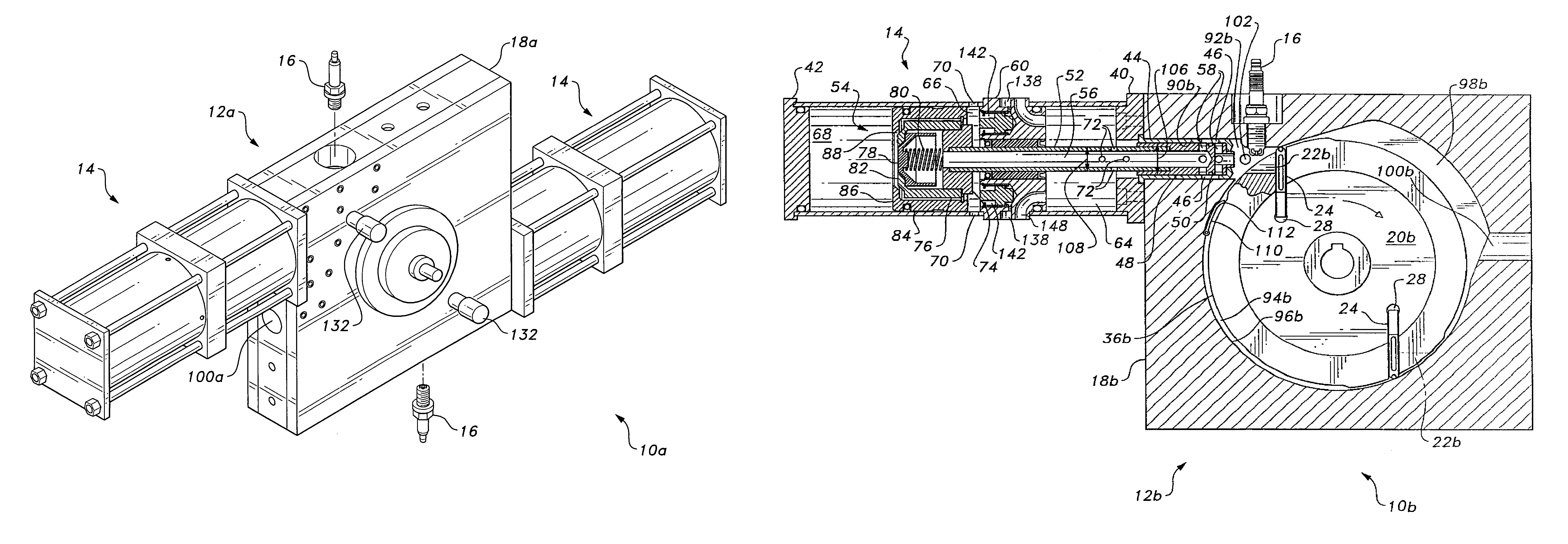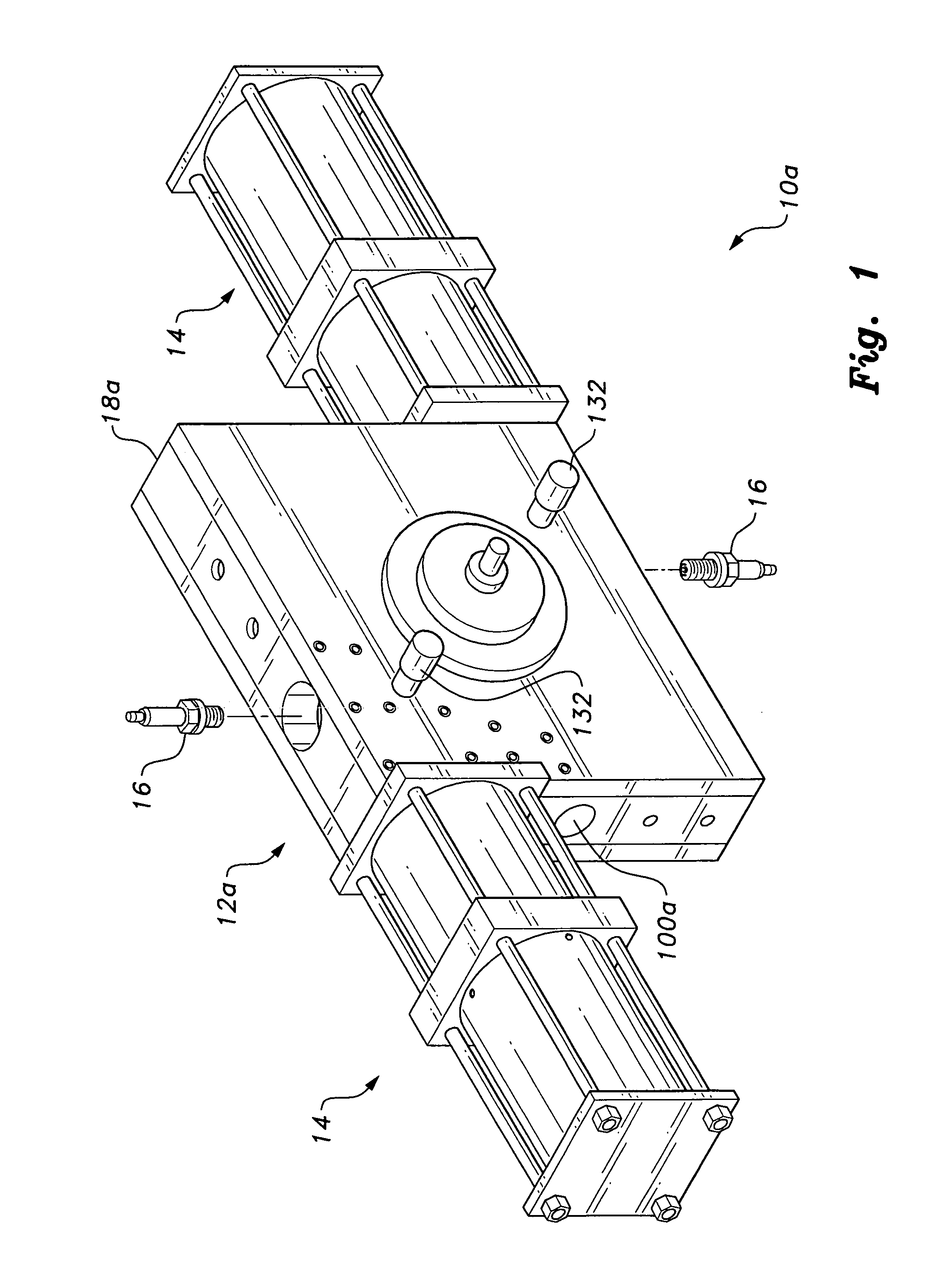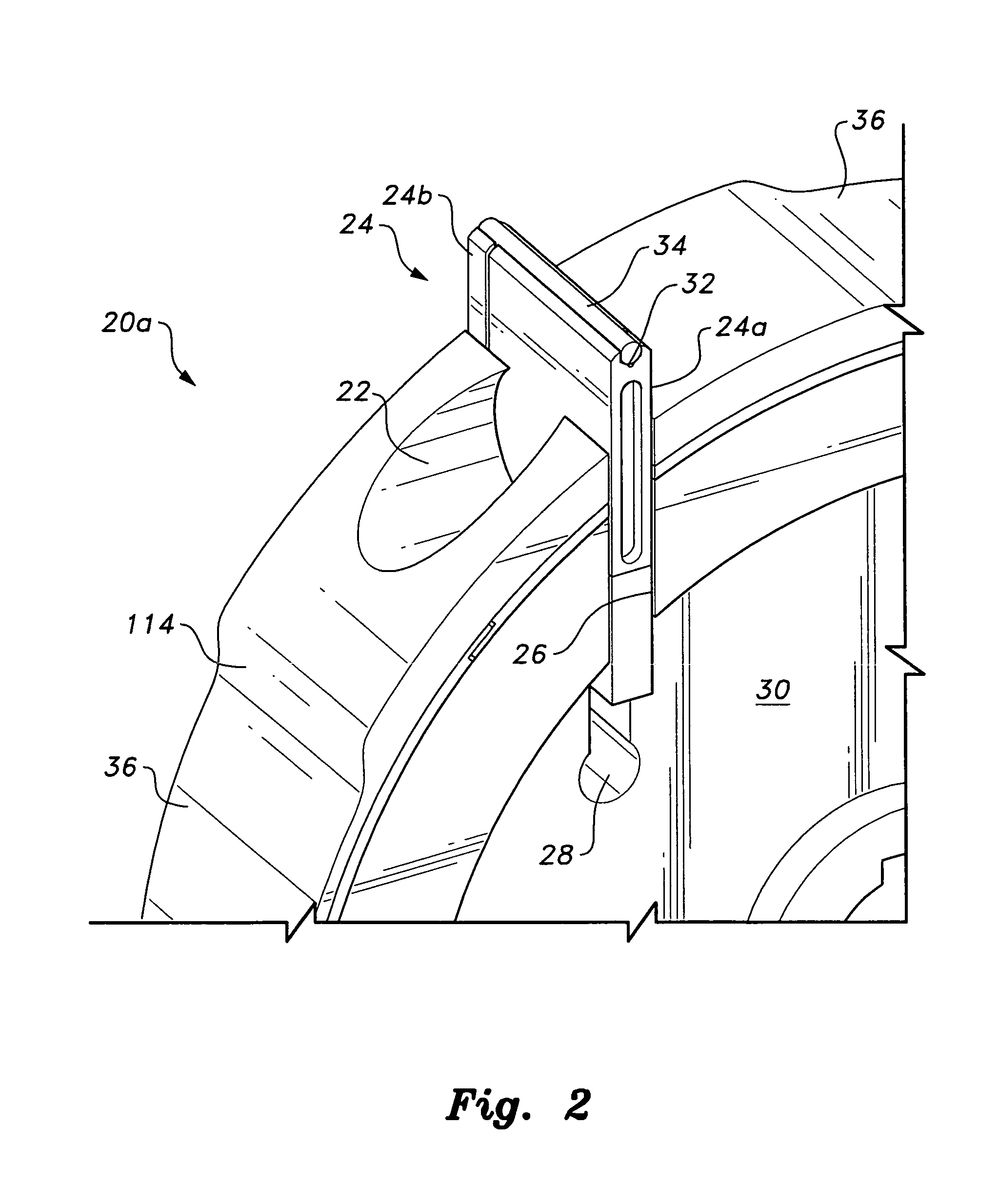Split-chamber rotary engine
a rotary engine and split-chamber technology, applied in the direction of liquid fuel engines, machines/engines, combination engines, etc., can solve the problems of inefficiency of the reciprocating piston internal combustion engine principle, inability to achieve the effect of increasing the torque output of the engine, high resistance to detonation, and efficient operation
- Summary
- Abstract
- Description
- Claims
- Application Information
AI Technical Summary
Benefits of technology
Problems solved by technology
Method used
Image
Examples
Embodiment Construction
[0032]The rotary engine has a power module that comprises a rotor disposed within a case and at least one compression module that comprises a reciprocating piston assembly actuated by pneumatic or combustion pressure from the power module. The engine may have various embodiments that differ according to different numbers of combustion chambers within the rotor, different numbers of compression modules, and / or single or multiple rows of compression and power modules, as desired.
[0033]FIG. 1 provides a perspective view of a first embodiment of the engine 10a, having a power module 12a with two identical compression or compressor modules 14. Conventional spark plugs 16, or glow plugs for starting in a diesel engine, are provided, with one spark plug or glow plug 16 located at the juncture of each compressor module with the rotor chamber within the power module 12a, discussed further below. The power module 12a comprises a case 18a having a rotor therein, e.g. rotor 20a, a portion of wh...
PUM
 Login to View More
Login to View More Abstract
Description
Claims
Application Information
 Login to View More
Login to View More - R&D
- Intellectual Property
- Life Sciences
- Materials
- Tech Scout
- Unparalleled Data Quality
- Higher Quality Content
- 60% Fewer Hallucinations
Browse by: Latest US Patents, China's latest patents, Technical Efficacy Thesaurus, Application Domain, Technology Topic, Popular Technical Reports.
© 2025 PatSnap. All rights reserved.Legal|Privacy policy|Modern Slavery Act Transparency Statement|Sitemap|About US| Contact US: help@patsnap.com



